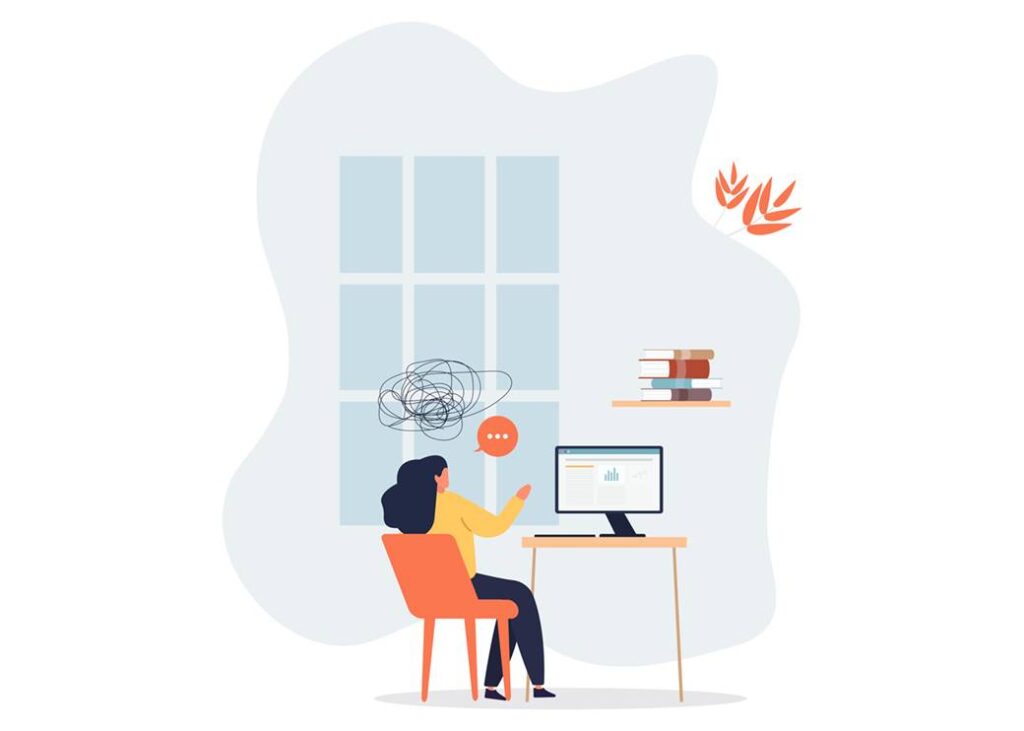
Is the crux of higher education institutions’ goal forgotten in the zest for remote work?
Remote and hybrid work affects well-being at work in many ways. Spirited discussion about the sufficient amount of face-to-face interaction is now ongoing in work communities.
Text tarja sinervo images istock English translation Marko Saajanaho
The society-stirring crises of recent years have caused permanent changes to working life. Large numbers of specialists and researchers in particular have opted to work remotely to this day.
Many find work gets done most effectively in the peace of one’s own home.
However, the effects of on-site, remote, and hybrid work should also be considered from a community perspective, notes Sinimaaria Ranki, Ph.D (Econ) and Chief Specialist at the Finnish Institute of Occupational Health. At campus, there may be a colleague or student whose progress is helped by someone asking them something pertinent and when issues are considered together. This kind of meeting may open a new perspective to a matter, one which may not have been found in remote work.
“In academic communities, producing new knowledge is the crux of everything. If there is a place that offers opportunities for unexpected insights, questions, different perspectives, and spontaneity, this is that place. How do you foster sufficient opportunities like this?” Ranki asks.
Sinimaaria Ranki has studied working life for a long time. She has headed the Finnish Institute of Occupational Health’s HELP (Hybridityö, etätyö ja läsnätyö, “Hybrid Work, Remote Work, and On-Site Work”). She believes the sense of community and learning together are higher education institutions’ strengths – they should simply be held onto.

“Many organisations have already found good hybrid work methods, but the road is often long. Finding a suitable method for your unit takes experimentation and plenty of discussion”, Ranki says.
According to Ranki, working towards a common goal is important for developing a sense of community. This involves understanding how your duties are connected to the bigger picture and move it forward. When there is a sense of community and an atmosphere of trust and appreciation at work, learning happens. This is then followed by the renewal of the mutual objectives, developing the activity further.
“Remote work means immense freedom but also responsibility. If competence and community begin to erode and people become isolated and fatigued, we should consider if this is sustainable.”
The good and bad fruits of remote work
According to the Finnish Institute of Occupational Health’s data, approximately 60 percent of working people in Finland work on-site, with 30 percent working remotely. 10 percent work exclusively remotely, four times more than before the COVID pandemic.
“Right now, it looks like hybrid workers spend two to three days in the workplace and the rest of their time doing remote work. The same ratio seems to apply to many countries”, Ranki says.

According to a Europe-wide survey, people see the option for remote work as a quality-of-life increase.
“Remote work makes it easier to balance work and daily life. It also increases job autonomy, which in turn improves the meaning and productivity of the job. People feel they can perform their duties better than before while being more efficient as well as more productive”, Ranki estimates.
”E-meetings usually follow the same formula. Spontaneity and the typical diversity of face-to-face communication tend to fall by the wayside”,”
Sinimaaria Ranki, Chief Specialist, Finnish Institute of Occupational Health
Through digitalisation, communication methods have developed by leaps and bounds. Electronic discussion platforms have made communication easier while enabling larger and larger groups of people to be accessible across a wider area. However, there are two sides to this coin.
“The group of co-workers we communicate with has narrowed. The communication quality has also suffered. E-meetings usually follow the same formula. Spontaneity and the typical diversity of face-to-face communication tend to fall by the wayside”, Ranki ponders.
Lack of community eats up work resources
The change in working methods also affect well-being at work.
“Over the last six months, well-being at work seems to have deteriorated especially because work resources such as work engagement, competence, and community have been on the decline”, Ranki explains. Her conclusion is based on the results of the Finnish Institute of Occupational Health’s ‘How is Finland doing?’ survey.
When examining well-being at work, we usually examine the balance between work resources and stress factors. If these are appropriately balanced, working capacity remains good, which in turn facilitates well-being at work. We know the sense of community has eroded due to remote work, and working alone at home also hurts learning at work. These are essential for both well-being at work and the productivity development of the job. Remote work also frequently causes feelings of loneliness and boredom.
The amount of work has also increased in specialist professions. With resources dwindling at the same time, burnout becomes increasingly likely. According to the ‘How is Finland doing?’ survey, 17 percent of workers are already at risk, and burnout symptoms are causing issues in daily life for 9 percent. On the positive side, three out of four workers say they do not experience burnout symptoms.
Trust and meaning as bright spots
Ranki sees strengths in academic working life as well.
“Mutual trust in workplaces is strong here. People believe they can offer thoughts and ideas at work. If conflicts arise, they can be addressed and solved together. Trust is an important element in finding approaches to support well-being at work in our work communities through mutual discussion and experimentation.”
Another important strength in working life is the sense of work being meaningful.
“Over 85 percent of earners feel their work is meaningful. That is an extremely important quality. Three out of four people are motivated, find their job engaging, and are able to make independent decisions. This forms a strong base for us to build upon.”
Sinimaaria Ranki’s tips for overcoming the workload
The increased amount of work has emerged as an issue in our recent surveys. In terms of researchers, this is a complicated question because of our strong passion towards work. During a thrilling research phase, we might not want to stop working. We should regularly discuss priorities critically in our work communities – what is the essential work we must do?
Leading through information is a frequent topic of discourse, with massive amounts of data being gathered. It is important to consider what is relevant and necessary information and how it is collected. Can we gather this data automatically or does it require a large group of people to manually enter it into the system? What do we truly need, how are duties organised, and how are automation and AI utilised in the process?
The key question regarding productivity and well-being at work is this: How to do things smarter and focus on what’s relevant? In order to see this, we need time to think. Sometimes, we must stop performing and take some time to ponder so we can see more clearly.

